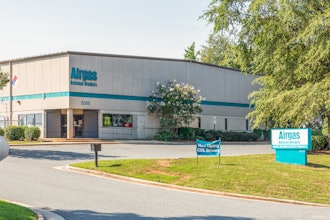
Maybe you’re familiar with just-in-time as a concept, but what’s this about a just-in-time workforce?
At Veryable, we provide a marketplace for on-demand labor, which companies use to build a just-in-time workforce for themselves. This article won’t be about our solution, but will cover the general concept in as unbiased a way as possible.
In this article, you’ll learn what a just-in-time workforce is, how it works, and how you can build one for your company.
What is a just-in-time workforce?
A just-in-time workforce borrows the just-in-time concept from Lean, which originally applied to inventory from an upstream supplier. You can apply the same idea to labor once you understand the intention behind it.
Just-in-time manufacturing (JIT) was the original name of what we know today as Lean manufacturing, and paved the way for Lean thinking. The core idea of JIT was that a manufacturer would not order materials from a supplier until they received an order that required the materials. This would reduce inventory and create a pull system by paying for what’s needed for production “just in time.”
Fundamentally, labor and capital are the two main inputs for production today. After applying just-in-time thinking to capital, the logical progression is applying the same concept to labor for the next step-level improvement.
What problem does a just-in-time workforce solve?
Existing labor strategies leave a lot of room for waste. Businesses often create waste when demand is higher than their capacity by giving overtime and overutilizing their employees. They also create waste when demand is lower than their capacity, such as a higher cost per unit due to paying the same number of people even though there’s less work.
With a just-in-time workforce, you match capacity to demand in real time to eliminate waste. It’s a simple concept that takes time and practice to implement properly: when your business gets demand signals, you find just enough materials and labor to meet the demand just in time.
How does a just-in-time workforce work?
To implement a just-in-time workforce, businesses with incremental work find workers with flexible schedules who can do the work.
The workers typically have training for the work already, or do work that the business can quickly and easily train them on.
Put simply, businesses only pay for the work they need done, as opposed to keeping the same amount of workers on payroll regardless of whether there was anything for them to do. This doesn’t mean you would stop employing people full-time; it just means that any work that can’t be handled by your base level of staff would be handled by on-demand workers on an as-needed basis.
By only bringing in workers when there’s work for them to do, you can quickly increase your output and reduce cost per unit. You also gain the ability to respond to demand variation comfortably, whether it’s higher or lower than usual.
How to build a just-in-time workforce
A new approach to matching labor capacity and demand is needed to achieve a truly just-in-time workforce.
Employing only full-time employees does not provide enough flexibility to be just-in-time, due to the need for each employee to work a certain number of hours to maintain full-time status.
Temp staffing is too slow to enable just-in-time approaches, and often comes with usage requirements that create an additional baseline on top of the full-time staff level, taking some flexibility away.
Thus, the solution is using a technology platform to quickly find workers only when there’s work to be done. This takes out the middlemen and empowers your business to create a flexible extension of your workforce that’s available just in time for the work.
This flexible extension of your workforce is also known as a labor pool. Manufacturing and logistics companies use Veryable’s on-demand labor marketplace to build their own just-in-time workforce in the form of a labor pool every day.
Learn more about how you can improve your cost per unit and reach more competitive lead times with this strategy by reading our blog on what a labor pool is.
Steven Calhoun is a content strategist at Veryable.






















